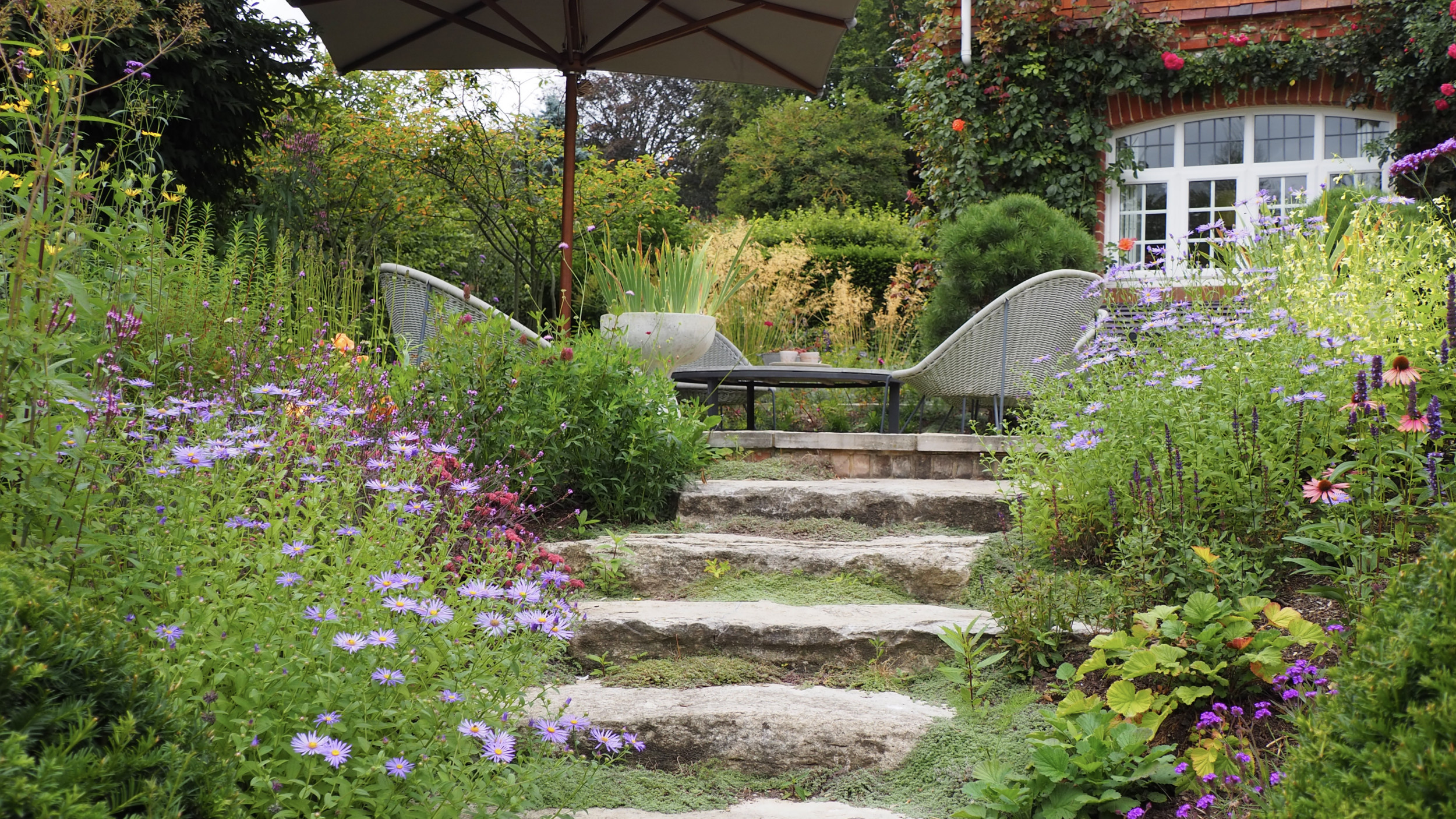
The writing is on the … back fence. Over the past couple of years, the U.S. has become a nation of gardeners.
Millions of Americans turned to gardening during coronavirus lockdowns, according to the Garden Trends Report 2022 from PR agency Garden Media Group. Social media mentions of “front porch” and “front yard” reached a five-year high in 2021, the report found, and consultants at McKinsey & Company predict that 75% of new gardeners will keep up the hobby.
If you’re among this cohort of lockdown gardeners, what should you be doing to your patch of green in the run-up to summer? Newsweek has asked industry insiders and gardening experts for their tips.
Keeping Your Garden Wild
Gardening can sometimes feel like a battle against nature, but one of this year’s hottest trends is letting your garden grow however it wants. It’s not quite rewilding—the practice of letting areas grow as they naturally would in order to promote biodiversity—but what designers call “nature-scaping” and “curated wilding.”
Ann-Marie Powell, a member of the U.K.’s Society of Garden Designers, has seen a spike in clients wanting “natural, loose gardens.”
“The trend for 2022 is the immersive, natural, wildlife garden—and, to be honest, this thrills me to the core,” she said. “People want gardens that look like they are ‘of nature’ rather than the more obviously designed spaces.”

Ann-Marie Powell/SGD
Does this mean you should stop mowing your lawn and let a meadow flourish? Not necessarily, said Andrew Duff, vice chair of the society and a garden designer for more than 30 years.
“If you’ve got kids who want to play, a meadow is not great. If you’ve got a dog, a meadow is not great,” he told Newsweek. “When I was a kid, our lawn went brown and there was moss. We didn’t cover it in chemicals to kill off the weeds and the moss.
“I think we need to shift our perceptions about what a beautiful lawn actually is. A lawn changes through the seasons. It’s a great place for wildlife if you let the moss and other things grow in it.”
Embracing Seasonal Changes
Duff has also noticed a change in attitudes around how the garden looks at different times of the year. As a result of the pandemic, he said, more gardeners are aware that “a garden is not what we see on Instagram.”
“The lawn is green, every plant is green… that’s simply not realistic, and people realize that now,” he said. “The pandemic allowed us to slow down and see all these [seasonal] changes on a daily basis.”
This year, he said, more gardeners are celebrating the change of seasons—and this includes an acceptance of winter.
“People have realized that it’s OK for a tree not to have leaves; it’s the beauty of the bark and the structure of the tree. And it’s OK to have bare soil. That’s part of seasonality,” Duff said. “There’s been a shift in our perception of what’s perfect. And actually winter is a really, really beautiful period.”
This approach benefits the environment and he believes more gardeners will start letting fallen leaves sit in their yards, for example, rather than clearing them immediately.

Ann-Marie Powell/SGD
Bringing the Outdoors into Your Home
If you use any social media platform, it won’t be news to you that the popularity of houseplants has rocketed in recent years. The industry can “expect sustained growth in the houseplant category” in 2022, according to the Garden Trends Report.
Shoppers appear to be nostalgic for the 1970s, the report found, opting for plants such as:
- Pothos
- Ficus
- Spider plants
- African violets
- Ferns
The Farmers’ Almanac is also expecting the passion for houseplants to continue. “This year, it’s about a whole lot more than planting a windowsill herb garden. Now, we’re looking at something more robust,” it wrote.
“That means grow lights, hanging planters and even bringing small trellises indoors for vining plants. Some hobbyists are creating entire jungle rooms.”
Being Kind to Birds and Bees
Another result of the pandemic is a heightened interest in birds and pollinators, according to the Farmers’ Almanac. Along with “curated wilding,” gardeners are looking to create spaces that support local wildlife—which means more birdbaths and flowering plants. The market for bird feeders and bird feed was an estimated $2.2 billion in 2021, said the Garden Trends Report, and sales are expected to rise this year.
As Duff points out, however, you don’t need to buy a product to attract birds or bees. You can simply choose your plants wisely. He has seen a revival of hedges in recent years, with gardeners realizing they can extend their green space by planting vertically at the boundaries of their yard. A “tapestry hedge,” combining a variety of wild hedge plants, will benefit local birds.
“You can imagine people staring out of their windows at home and thinking, a bird feeder would be fantastic. I think they’re great, but a varied hedge is better at attracting birds.” Hawthorn is particularly good for this, he said. “People are really experimenting and having fun in their garden again.”
More than 67 million households bought at least one plant in 2020 “because it benefited pollinators or birds,” according to the Garden Trends Report. These included:
- Eastern redbud
- Crabapple
- Southern magnolia
- Black gum
- Tuliptree
You can also attract insects and pollinators by planting a “tapestry lawn” of various mowing-tolerant species, said garden designer Ana Sanchez-Martin.
“The need to mow a tapestry lawn can be reduced by up to two thirds compared to a regular grass lawn and, as a consequence, a greater number of both plant and insect species are able to inhabit the lawn.”

Andrew Duff/SGD
